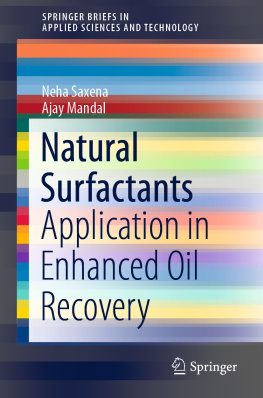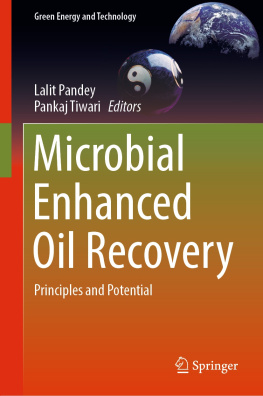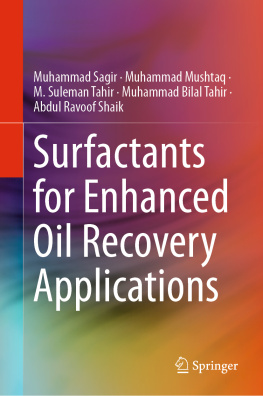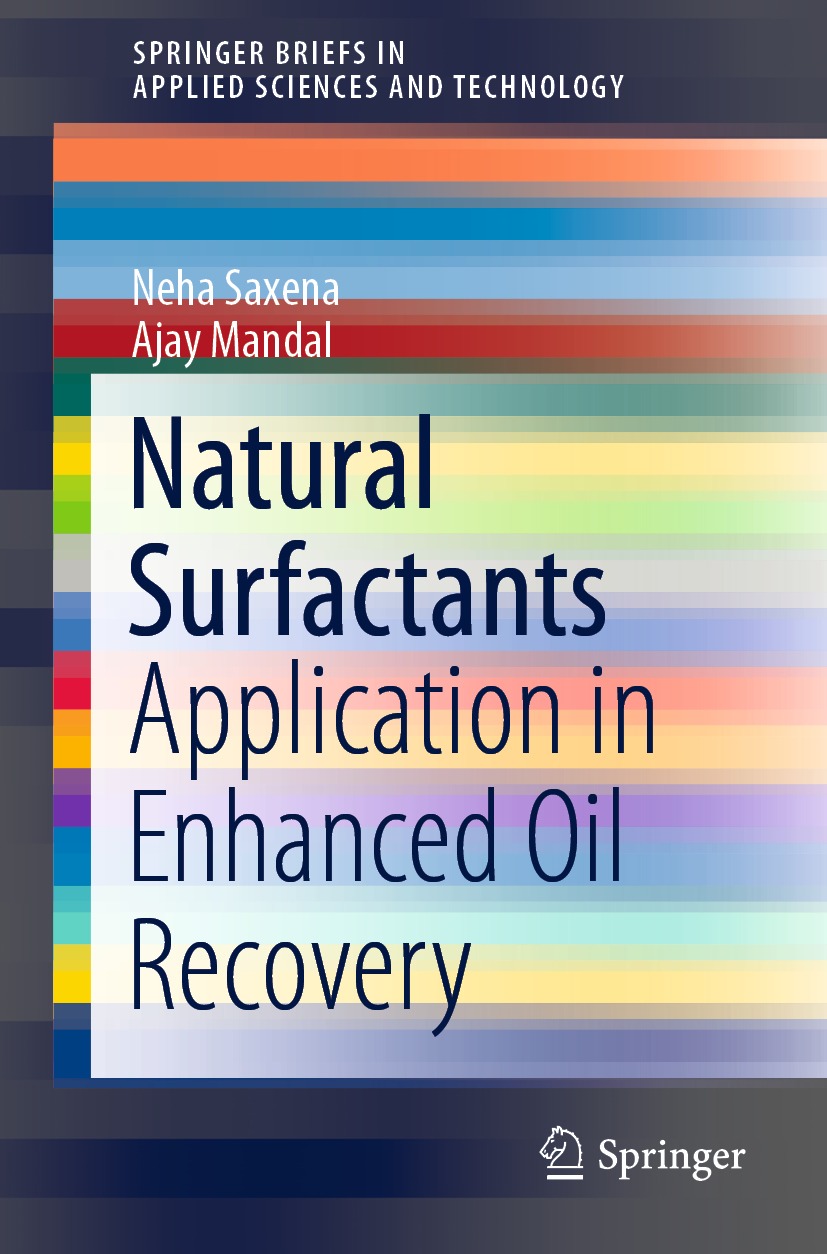SpringerBriefs in Applied Sciences and Technology
Series Editor
Andreas chsner
Griffith School of Engineering, Griffith University, Southport, QLD, Australia
SpringerBriefs present concise summaries of cutting-edge research and practical applications across a wide spectrum of fields. Featuring compact volumes of 50 to 125 pages, the series covers a range of content from professional to academic.
Typical publications can be:
A timely report of state-of-the art methods
An introduction to or a manual for the application of mathematical or computer techniques
A bridge between new research results, as published in journal articles
A snapshot of a hot or emerging topic
An in-depth case study
A presentation of core concepts that students must understand in order to make independent contributions
SpringerBriefs are characterized by fast, global electronic dissemination, standard publishing contracts, standardized manuscript preparation and formatting guidelines, and expedited production schedules.
On the one hand, SpringerBriefs in Applied Sciences and Technology are devoted to the publication of fundamentals and applications within the different classical engineering disciplines as well as in interdisciplinary fields that recently emerged between these areas. On the other hand, as the boundary separating fundamental research and applied technology is more and more dissolving, this series is particularly open to trans-disciplinary topics between fundamental science and engineering.
Indexed by EI-Compendex, SCOPUS and Springerlink.
More information about this series at http://www.springer.com/series/8884
Neha Saxena and Ajay Mandal
Natural Surfactants
Application in Enhanced Oil Recovery
1st ed. 2022

Logo of the publisher
Neha Saxena
Department of Petroleum Engineering, Indian Institute of Technology (ISM) Dhanbad, Dhanbad, Jharkhand, India
Ajay Mandal
Department of Petroleum Engineering, Indian Institute of Technology (ISM) Dhanbad, Dhanbad, Jharkhand, India
ISSN 2191-530X e-ISSN 2191-5318
SpringerBriefs in Applied Sciences and Technology
ISBN 978-3-030-78547-5 e-ISBN 978-3-030-78548-2
https://doi.org/10.1007/978-3-030-78548-2
The Author(s), under exclusive license to Springer Nature Switzerland AG 2022
This work is subject to copyright. All rights are solely and exclusively licensed by the Publisher, whether the whole or part of the material is concerned, specifically the rights of translation, reprinting, reuse of illustrations, recitation, broadcasting, reproduction on microfilms or in any other physical way, and transmission or information storage and retrieval, electronic adaptation, computer software, or by similar or dissimilar methodology now known or hereafter developed.
The use of general descriptive names, registered names, trademarks, service marks, etc. in this publication does not imply, even in the absence of a specific statement, that such names are exempt from the relevant protective laws and regulations and therefore free for general use.
The publisher, the authors and the editors are safe to assume that the advice and information in this book are believed to be true and accurate at the date of publication. Neither the publisher nor the authors or the editors give a warranty, expressed or implied, with respect to the material contained herein or for any errors or omissions that may have been made. The publisher remains neutral with regard to jurisdictional claims in published maps and institutional affiliations.
This Springer imprint is published by the registered company Springer Nature Switzerland AG
The registered company address is: Gewerbestrasse 11, 6330 Cham, Switzerland
Acknowledgement
I wish to express my sincerest appreciation and gratitude to the Co-Author of this book Dr. Ajay Mandal, Professor, Department of Petroleum Engineering, for his continuous guidance, rigorous supervision, effective suggestions and the hours spent for discussing and reviewing the intricate aspects of this work.
Most importantly, my special gratitude is due to my parents, my in-laws, Siddharth Sabharwalmy life partner, and my friends for their love, blessing, encouragement and never-ending kindness which made everything easier to achieve.
I would like to pay sincere thanks to IIMT University for motivating me to develop a research-oriented aptitude and to utilize my knowledge in the right direction.
Contents
The Author(s), under exclusive license to Springer Nature Switzerland AG 2022
N. Saxena, A. Mandal Natural Surfactants SpringerBriefs in Applied Sciences and Technology https://doi.org/10.1007/978-3-030-78548-2_1
1. Historical View
Neha Saxena
(1)
Department of Petroleum Engineering, Indian Institute of Technology (ISM) Dhanbad, Dhanbad, Jharkhand, India
(2)
Department of Petroleum Engineering, Indian Institute of Technology (ISM) Dhanbad, Dhanbad, Jharkhand, India
Neha Saxena (Corresponding author)
Email:
1.1 History of Surfactants
Surfactants are compounds having the properties of detergents and have been identified with human civilization. Plants or different parts of plants like stem, leaves have these detergent-like properties, e.g. soap-nut pericarp was used as a source for washing hairs, and leaves of Jatropha were crushed to use it as a source of washing clothes in Indian culture previously. Hence, it becomes very tough to report the exact time when the surfactants were identified and used by the humans. Though for man-made surfactants, their manufacturing and application are well known, and the exact time can be reported, the same cannot be said about natural surfactants.
Few historical applications of these soap-like compounds were identified around 600 B.C. Phoenicians filed the application of surfactant around 3000 years ago (Sagir et al. ). The origin of these compound has been identified in Mediterranean culture. From the beginning, the soap was manufactured using wood ash, fats and many other plant products. It has been found in the literature that surfactants from industry have been brought about 2000 years ago where they were used to neutralize animal fats. Many non-soap materials like sulphated oil were used as surface-active agents. These oils became famous with trade names like turkey red oil produced by reacting sulphuric acid with castor oil producing a form which has a polar head and long non-polar chain. During World War I, synthetic surfactants gained application to reduce the deficiency from the vegetables and animal fats produced.
In the past century, the development in the field of surfactant science boomed in the 1920s and 1930s, where the process of sulphation of long-chain alkyl and aryl alcohols was developed. The product obtained has detergent properties and was used as washing agents. By the end of World War II, the long-chain aryl sulphonates replaced the sulphates obtained from alcohol and were commercially available in the market as washing compounds. Alcoholic sulphates procured the market and found application in shampoo and personal care products.







